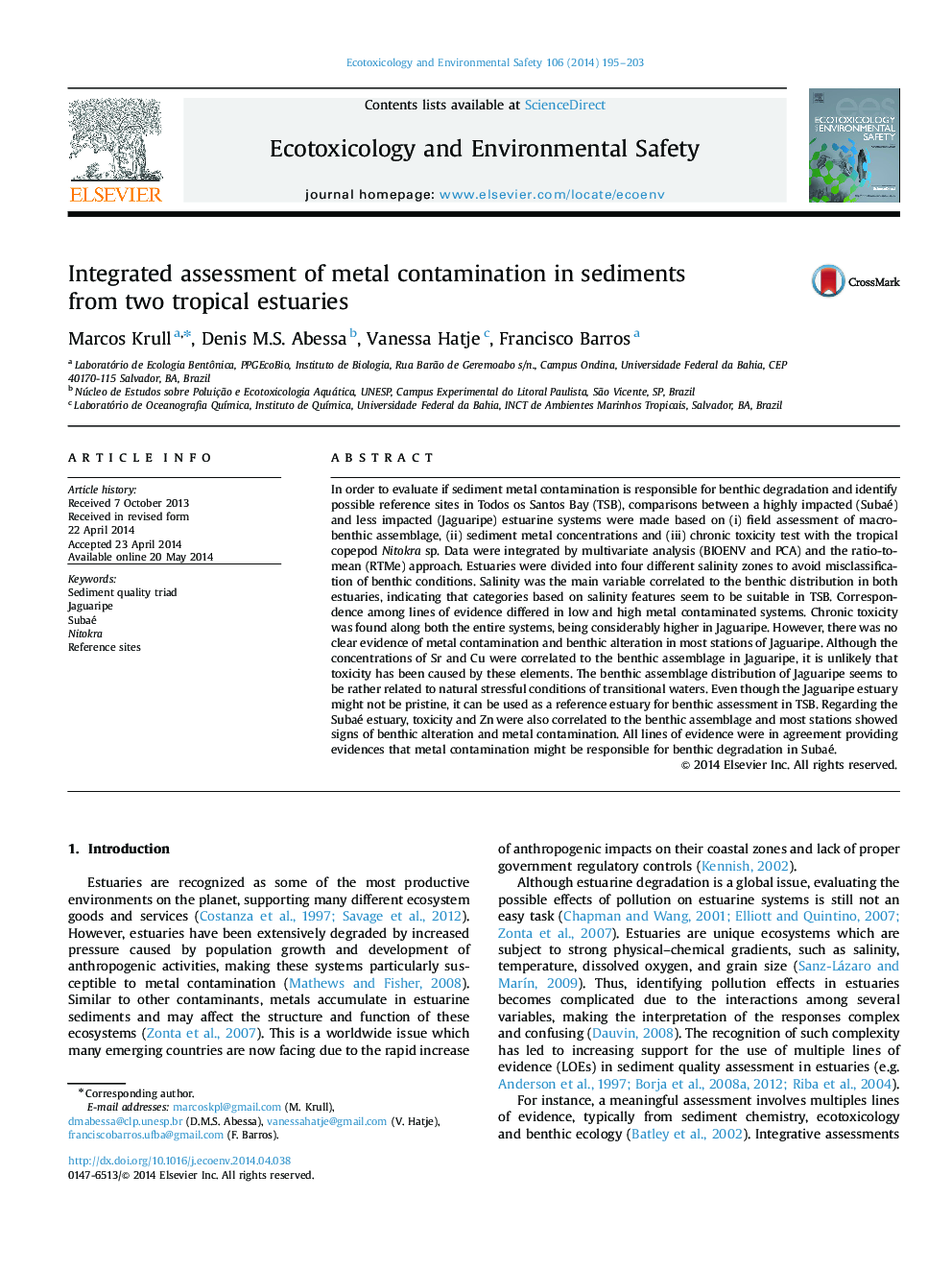| Article ID | Journal | Published Year | Pages | File Type |
|---|---|---|---|---|
| 4420037 | Ecotoxicology and Environmental Safety | 2014 | 9 Pages |
•We aimed at assessing if metal contamination is responsible for benthic degradation.•Comparisons among high and low metal contaminated systems were made.•Estuaries were divided into different salinity zones to evaluate benthic conditions.•Correspondence among LOEs differed in low and high metal contaminated systems.
In order to evaluate if sediment metal contamination is responsible for benthic degradation and identify possible reference sites in Todos os Santos Bay (TSB), comparisons between a highly impacted (Subaé) and less impacted (Jaguaripe) estuarine systems were made based on (i) field assessment of macrobenthic assemblage, (ii) sediment metal concentrations and (iii) chronic toxicity test with the tropical copepod Nitokra sp. Data were integrated by multivariate analysis (BIOENV and PCA) and the ratio-to-mean (RTMe) approach. Estuaries were divided into four different salinity zones to avoid misclassification of benthic conditions. Salinity was the main variable correlated to the benthic distribution in both estuaries, indicating that categories based on salinity features seem to be suitable in TSB. Correspondence among lines of evidence differed in low and high metal contaminated systems. Chronic toxicity was found along both the entire systems, being considerably higher in Jaguaripe. However, there was no clear evidence of metal contamination and benthic alteration in most stations of Jaguaripe. Although the concentrations of Sr and Cu were correlated to the benthic assemblage in Jaguaripe, it is unlikely that toxicity has been caused by these elements. The benthic assemblage distribution of Jaguaripe seems to be rather related to natural stressful conditions of transitional waters. Even though the Jaguaripe estuary might not be pristine, it can be used as a reference estuary for benthic assessment in TSB. Regarding the Subaé estuary, toxicity and Zn were also correlated to the benthic assemblage and most stations showed signs of benthic alteration and metal contamination. All lines of evidence were in agreement providing evidences that metal contamination might be responsible for benthic degradation in Subaé.
